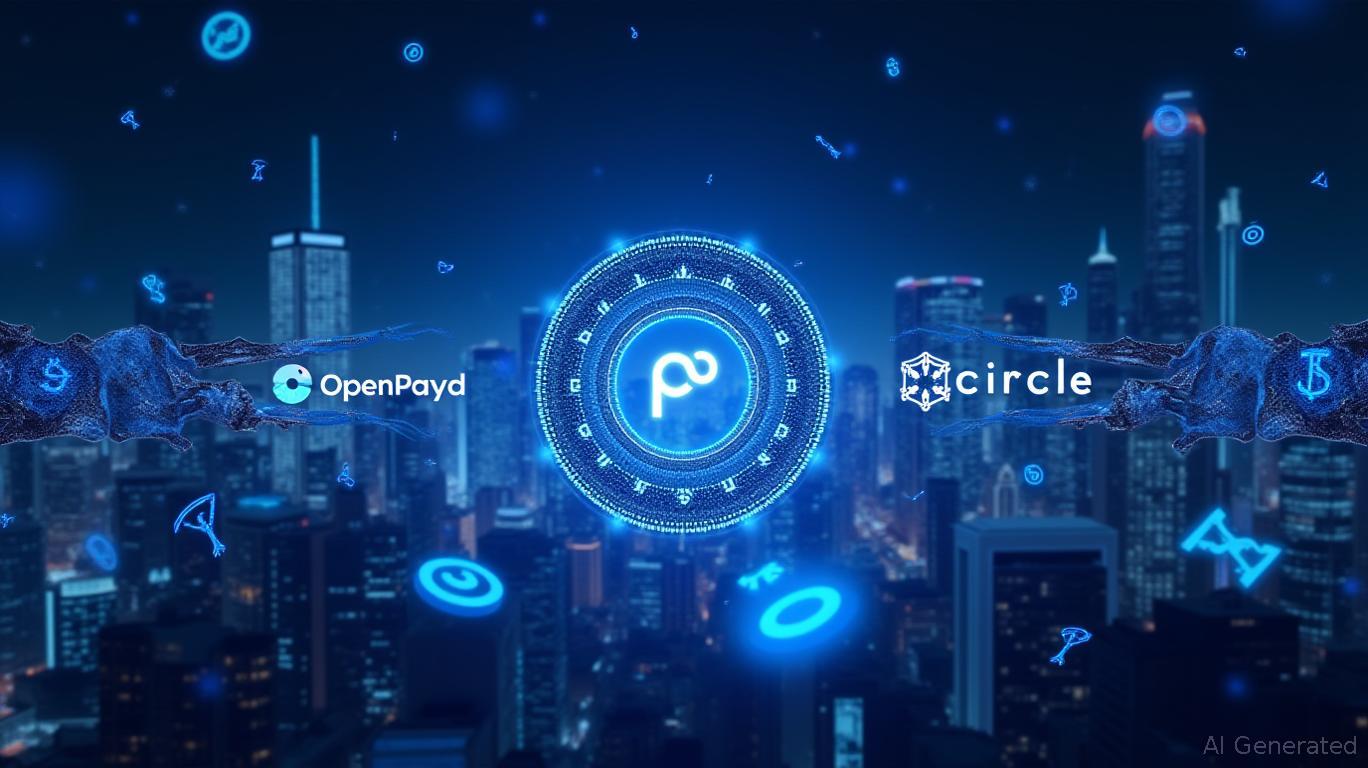The Digital Dollar Revolution: How OpenPayd and Circle Are Redefining Global Payments
The global financial system is at an
. Traditional cross-border payment systems, hamstrung by slow settlement times, opaque fees, and fragmented infrastructure, are increasingly being displaced by a new paradigm: programmable money. At the forefront of this shift is the partnership between OpenPayd, a leading financial infrastructure provider, and Circle, the issuer of the USDC stablecoin. Their collaboration, announced in June 2025, represents a landmark step toward unifying fiat currencies and digital assets into a seamless ecosystem. For investors, this is more than a technical upgrade—it's a strategic advantage that could redefine the fintech landscape.
The Problem: A Financial System Stuck in the Past
Cross-border payments remain inefficient. According to the World Bank, the average cost of sending $200 across borders is nearly 6%, and settlements often take days. Traditional systems rely on intermediaries like correspondent banks, each with their own ledgers and compliance checks. This friction stifles innovation and excludes smaller businesses from global markets.
Enter stablecoins. Assets like USDC—pegged 1:1 to the U.S. dollar—offer stability, programmability, and near-instant settlements. Yet, their adoption has been constrained by the lack of a bridge between digital assets and legacy financial infrastructure. OpenPayd and Circle's partnership aims to solve this by creating a unified platform where businesses can seamlessly toggle between fiat and USDC.
Strategic Advantages for Fintechs: Liquidity, Cost, and Scale
1. Liquidity at the Speed of Code
OpenPayd's platform processes over €130 billion annually for clients ranging from crypto exchanges like OKX to traditional firms like B2C2. By integrating USDC, the partnership enables real-time conversions between fiat and stablecoins at both ends of a transaction. For instance, a European exporter could receive euros in their bank account while the U.S. buyer pays in USDC, with no manual intervention. This reduces reliance on pre-funded nostro accounts and opens access to liquidity pools otherwise reserved for large institutions.
2. Settlement Costs Decline Dramatically
The average cost of a cross-border payment via OpenPayd and Circle's system is projected to drop to less than 1%—a fraction of traditional fees. Blockchain's programmability also eliminates reconciliation delays. For fintechs, this means lower overhead, higher margins, and the ability to serve smaller clients who were previously unprofitable to onboard.
3. The API-First Playbook
OpenPayd's platform offers an API-based gateway for businesses to embed payments, accounts, and digital asset services into their products. By partnering with Circle, they've added USDC as a native payment rail. This modular approach allows fintechs to experiment with new use cases—such as programmable remittances or decentralized treasury management—without rebuilding infrastructure from scratch.
Positioning for Dominance in Stablecoin Adoption
The partnership isn't just about cost savings. It positions OpenPayd and Circle at the center of a broader shift toward programmable money. Consider the regulatory tailwinds: the U.S. Treasury's 2023 framework for digital asset oversight and the European Commission's MiCA regulation have created guardrails for innovation. Meanwhile, central banks globally are exploring digital currencies, accelerating demand for private-sector solutions that complement them.
OpenPayd's existing partnerships—like its integration with Brazil's Pix system and TrueLayer's open banking platform—hint at a broader strategy: build a global financial operating system. Clients gain a single point of access to fiat, stablecoins, and regional payment networks. For investors, this suggests a scalable moat: the more businesses adopt the platform, the more data and liquidity it attracts, creating a self-reinforcing network.
The Investment Thesis: Bet on Infrastructure, Not Just Assets
The market is pricing in disruption. Circle's valuation, which now includes its infrastructure services alongside USDC issuance, has risen steadily as institutional demand for stablecoin solutions grows. OpenPayd's valuation multiples, while still private, are likely expanding as its client roster diversifies.
Recommendation:
- Buy into USDC infrastructure providers like Circle and OpenPayd (when public). Their APIs and liquidity networks are the “plumbing” of the digital economy.
- Look for fintechs with embedded USDC capabilities. Companies like Nexo or Bitstamp, already onboarded to OpenPayd's platform, could see margin improvements as settlement costs shrink.
- Avoid laggards—banks and payment processors that haven't yet integrated with stablecoin rails risk becoming irrelevant.
Risks and Considerations
Regulatory uncertainty remains a wildcard. While USDC is backed by regulated reserves, scrutiny over stablecoin transparency and custody rules could introduce volatility. Additionally, competition is intensifying: rival partnerships like PayPal's collaboration with Silvergate and Mastercard's blockchain initiatives pose threats.
Conclusion: The Digital Economy's New Operating System
OpenPayd and Circle's partnership isn't just about moving money faster. It's about building a financial system where liquidity, cost efficiency, and innovation are no longer zero-sum trade-offs. For investors, the lesson is clear: the winners of the digital asset era will be those who control the infrastructure. The time to position portfolios for this shift is now.
This analysis assumes no personal interest in the securities mentioned. Past performance does not guarantee future results.

Comments
No comments yet